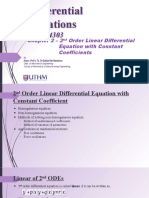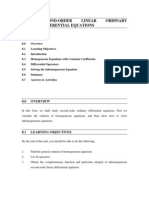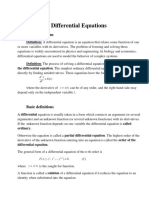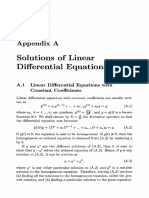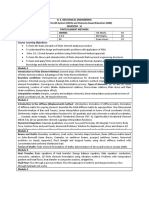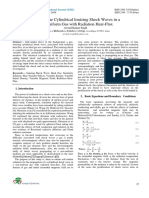0% found this document useful (0 votes)
34 views58 pagesM1 Module 5
This lecture covers the topic of homogeneous constant coefficient ordinary differential equations (ODEs) as part of a mathematics course. It discusses the definition of differential equations, methods for solving them, and introduces higher-order linear differential equations with constant coefficients. The lecture also includes examples of finding general solutions for different types of roots in characteristic equations.
Uploaded by
blueoasis201987Copyright
© © All Rights Reserved
We take content rights seriously. If you suspect this is your content, claim it here.
Available Formats
Download as PDF, TXT or read online on Scribd
0% found this document useful (0 votes)
34 views58 pagesM1 Module 5
This lecture covers the topic of homogeneous constant coefficient ordinary differential equations (ODEs) as part of a mathematics course. It discusses the definition of differential equations, methods for solving them, and introduces higher-order linear differential equations with constant coefficients. The lecture also includes examples of finding general solutions for different types of roots in characteristic equations.
Uploaded by
blueoasis201987Copyright
© © All Rights Reserved
We take content rights seriously. If you suspect this is your content, claim it here.
Available Formats
Download as PDF, TXT or read online on Scribd
/ 58







